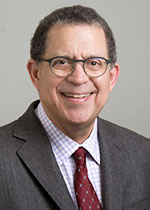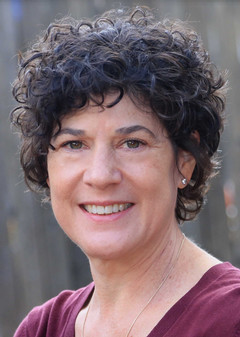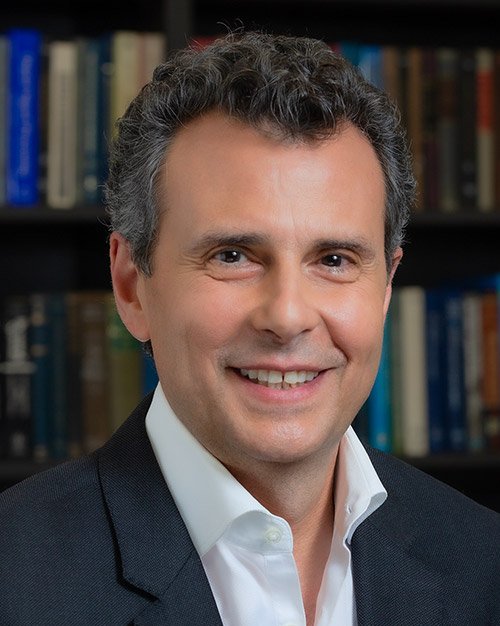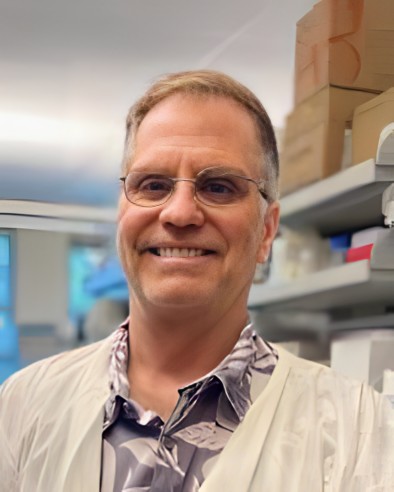 Steven E. Kahn, M.B., Ch.B., Leonard L. Wright and Marjorie C. Wright Chair; Professor, Division of Metabolism, Endocrinology and Nutrition; Director, Diabetes Research Center, University of Washington. He is an endocrinologist whose research focuses on the mechanisms responsible for the critical impairments in insulin secretion that result in the development of diabetes. With his colleagues, Dr. Kahn is also examining novel approaches to preventing and treating type 2 diabetes.
Steven E. Kahn, M.B., Ch.B., Leonard L. Wright and Marjorie C. Wright Chair; Professor, Division of Metabolism, Endocrinology and Nutrition; Director, Diabetes Research Center, University of Washington. He is an endocrinologist whose research focuses on the mechanisms responsible for the critical impairments in insulin secretion that result in the development of diabetes. With his colleagues, Dr. Kahn is also examining novel approaches to preventing and treating type 2 diabetes. Steven E. Lipshultz, M.D., A. Conger Goodyear Professor, Department of Pediatrics, University of Buffalo, Jacobs School of Medicine and Biomedical Sciences. He is a pediatric cardiologist who has been an Associate Dean and Department Chair. He studies IR/diabetes and cardiovascular diseases in children. Dr. Lipshultz is principal investigator of a study using comparative genomics and proteomics to study the development of pediatric cardiomyopathy. His team is conducting an NHLBI-funded multi-center international study of whole-exome sequencing in children with cardiomyopathy to determine the influence of genomic variation, genotype-phenotype correlations, modifier genes and gene-environment interactions on the development and progression of pediatric cardiomyopathy and on therapeutic successes, and the incidence of adverse clinical events.
Steven E. Lipshultz, M.D., A. Conger Goodyear Professor, Department of Pediatrics, University of Buffalo, Jacobs School of Medicine and Biomedical Sciences. He is a pediatric cardiologist who has been an Associate Dean and Department Chair. He studies IR/diabetes and cardiovascular diseases in children. Dr. Lipshultz is principal investigator of a study using comparative genomics and proteomics to study the development of pediatric cardiomyopathy. His team is conducting an NHLBI-funded multi-center international study of whole-exome sequencing in children with cardiomyopathy to determine the influence of genomic variation, genotype-phenotype correlations, modifier genes and gene-environment interactions on the development and progression of pediatric cardiomyopathy and on therapeutic successes, and the incidence of adverse clinical events. Lori Sussel, Ph.D., Sissel and Findlow Family Chair, Professor of Pediatrics and Cell and Developmental Biology, Director of Basic and Translational Research, Barbara Davis Center for Diabetes. Her research focuses on the complex transcriptional networks that regulate development, differentiation and function of the pancreas. Recent investigations are focused on issues relating to the regulation of alpha and beta cell identity and function with a specific focus on transcription factors and long non-coding RNAs. She leads an outstanding team of scientists and clinicians at the Barbara Davis Center for Diabetes dedicated to finding treatments and cures for Type 1 diabetes.
Lori Sussel, Ph.D., Sissel and Findlow Family Chair, Professor of Pediatrics and Cell and Developmental Biology, Director of Basic and Translational Research, Barbara Davis Center for Diabetes. Her research focuses on the complex transcriptional networks that regulate development, differentiation and function of the pancreas. Recent investigations are focused on issues relating to the regulation of alpha and beta cell identity and function with a specific focus on transcription factors and long non-coding RNAs. She leads an outstanding team of scientists and clinicians at the Barbara Davis Center for Diabetes dedicated to finding treatments and cures for Type 1 diabetes. Vassilis Syrmos, Ph.D., Vice President for Research and Innovation for the University of Hawaii. Dr. Syrmos serves as the senior institutional official on the Advisory Committee. He is charged with providing critical leadership and coordination of systemwide research and innovation efforts, including management and direction of UH’s research support, technology transfer and many compliance functions. He is a Professor in the College of Engineering and an electrical engineer whose interests include geometric and algebraic approaches in linear system theory, computational algorithms methods for signal and image processing, robust/optimal filter design in systems, medical imaging, and prognostics and diagnostics methods related to condition based maintenance systems.
Vassilis Syrmos, Ph.D., Vice President for Research and Innovation for the University of Hawaii. Dr. Syrmos serves as the senior institutional official on the Advisory Committee. He is charged with providing critical leadership and coordination of systemwide research and innovation efforts, including management and direction of UH’s research support, technology transfer and many compliance functions. He is a Professor in the College of Engineering and an electrical engineer whose interests include geometric and algebraic approaches in linear system theory, computational algorithms methods for signal and image processing, robust/optimal filter design in systems, medical imaging, and prognostics and diagnostics methods related to condition based maintenance systems. Peter R. Hoffmann, Ph.D., Professor, Department of Cell and Molecular Biology at the John A. Burns School of Medicine, University of Hawaii. He is the Principal Investigator of the Hawaii IDeA Network for Biomedical Research Excellence (HI-INBRE). He will serve as the senior faculty member on the Advisory Committee. Dr. Hoffmann's research is focused on the roles of selenoproteins and enzyme systems in regulating inflammation and immune responses. His laboratory has expertise in mouse models of inflammation and immune responses and has formed collaborations with faculty across different UH departments, nationally and internationally.
Peter R. Hoffmann, Ph.D., Professor, Department of Cell and Molecular Biology at the John A. Burns School of Medicine, University of Hawaii. He is the Principal Investigator of the Hawaii IDeA Network for Biomedical Research Excellence (HI-INBRE). He will serve as the senior faculty member on the Advisory Committee. Dr. Hoffmann's research is focused on the roles of selenoproteins and enzyme systems in regulating inflammation and immune responses. His laboratory has expertise in mouse models of inflammation and immune responses and has formed collaborations with faculty across different UH departments, nationally and internationally.The AC provides programmatic oversight and mentoring guidance. The AC meets twice a year; we are grateful for their guidance and commitment to our Center’s success. The responsibilities of the AC include providing general oversight, suggestions for mentoring, consideration of provided evaluation metrics, and scientific advice for the COBRE-Diabetes as well as for individual projects.
The goal of the AC is to evaluate whether the goals of the Center remain well aligned with the institution’s strategic priorities, evaluate the scientific progress of the supported RPLs, PPLs, and Metabolic and Analytic Core, evaluate RPL progress toward acquiring independent research funding, and reviewing/approving proposals for replacement Research Projects when such a need arises.